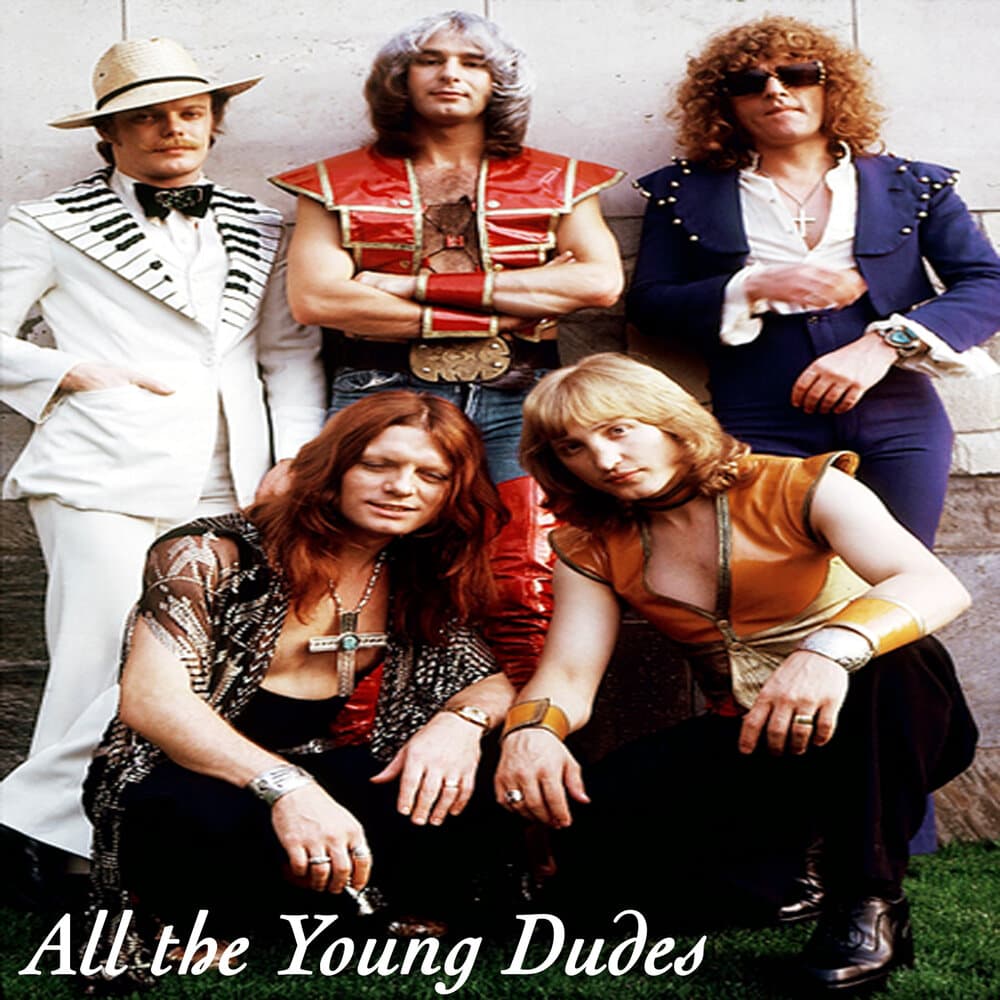
A Call to the Lost Generation—How “All the Young Dudes” Became a Glam Rock Anthem
Some songs define an era, capturing the spirit, rebellion, and uncertainty of a generation in just a few chords. Mott the Hoople’s “All the Young Dudes” is one of those songs—a rallying cry for the disaffected youth of the early ’70s, a moment when rock music became more than just sound and swagger.
Written and gifted by David Bowie, the song was a lifeline for Mott the Hoople, who were on the verge of breaking up in 1972 after a string of commercial failures. When they rejected his offer of “Suffragette City,” Bowie instead handed them “All the Young Dudes,” a song that would not only save the band but also cement their legacy in rock history.
Released as a single in July 1972, the song became Mott the Hoople’s biggest hit, climbing to No. 3 on the UK Singles Chart and making waves in the US, where it reached No. 37 on the Billboard Hot 100. But its impact extended far beyond the charts—“All the Young Dudes” became the unofficial anthem of glam rock, a genre that fused excess, androgyny, and raw energy into something completely new.
Lyrically, the song has long been debated. Some see it as a celebration of youth culture, a rejection of the mundane, working-class life that loomed over Britain in the early ‘70s. Others, given its connection to Bowie’s Ziggy Stardust narrative, interpret it as something more apocalyptic—a tale of a doomed generation, searching for meaning in the twilight of the world. Whatever its true meaning, the song spoke to those who felt like outsiders, drifters, and dreamers, giving them an identity, a tribe.
Musically, the track is soaring and anthemic, with its jangling guitars, infectious singalong chorus, and Ian Hunter’s world-weary yet triumphant vocals. And of course, there’s the spoken-word bridge, where Hunter delivers the lines with a mix of defiance and exhaustion—a voice that feels like it has seen it all and survived anyway.
Even after the glam era faded, “All the Young Dudes” endured. Covered by countless artists, from Bowie himself to Bruce Dickinson, the song remains a staple of rock nostalgia, still evoking the energy, rebellion, and sheer coolness of its time. It’s a song about survival, about youth on the edge of something unknown, about the restless souls who refuse to fade away.